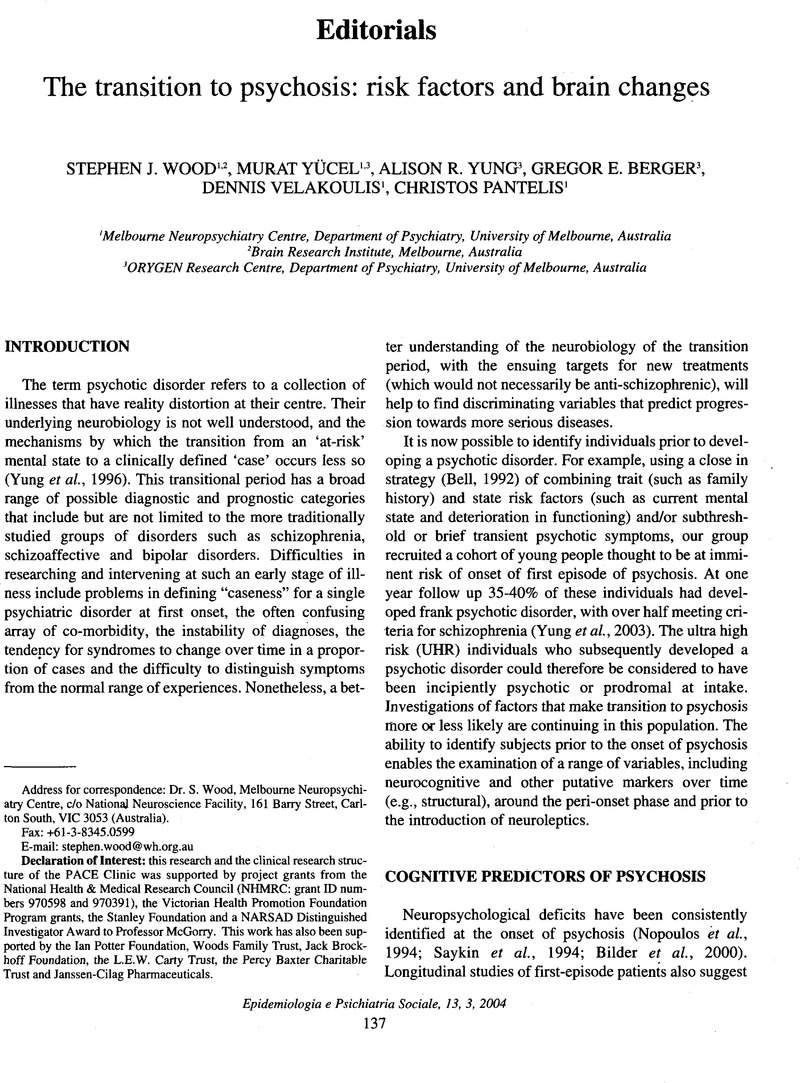Crossref Citations
This article has been cited by the following publications. This list is generated based on data provided by Crossref.
Francey, Shona M.
Jackson, Henry J.
Phillips, Lisa J.
Wood, Stephen J.
Yung, Alison R.
and
McGorry, Patrick D.
2005.
Sustained attention in young people at high risk of psychosis does not predict transition to psychosis.
Schizophrenia Research,
Vol. 79,
Issue. 1,
p.
127.
Brambilla, Paolo
Cerini, Roberto
Fabene, Paolo F.
Andreone, Nicola
Rambaldelli, Gianluca
Farace, Paolo
Versace, Amelia
Perlini, Cinzia
Pelizza, Luisa
Gasparini, Anna
Gatti, Rachele
Bellani, Marcella
Dusi, Nicola
Barbui, Corrado
Nosè, Michela
Tournikioti, Kalliopi
Sbarbati, Andrea
and
Tansella, Michele
2007.
Assessment of cerebral blood volume in schizophrenia: A magnetic resonance imaging study.
Journal of Psychiatric Research,
Vol. 41,
Issue. 6,
p.
502.
Bellani, Marcella
and
Brambilla, Paolo
2008.
The use and meaning of the continuous performance test in schizophrenia.
Epidemiologia e Psichiatria Sociale,
Vol. 17,
Issue. 3,
p.
188.
Yung, Alison R.
Nelson, Barnaby
Thompson, Andrew D.
and
Wood, Stephen J.
2010.
Should a “Risk Syndrome for Psychosis” be included in the DSMV?.
Schizophrenia Research,
Vol. 120,
Issue. 1-3,
p.
7.
Cullen, Kathryn
Guimaraes, Angela
Wozniak, Jeffrey
Anjum, Afshan
Schulz, S.
and
White, Tonya
2011.
Trajectories of Social Withdrawal and Cognitive Decline in the Schizophrenia Prodrome.
Clinical Schizophrenia & Related Psychoses,
Vol. 4,
Issue. 4,
p.
229.
Piontkewitz, Yael
Arad, Michal
and
Weiner, Ina
2012.
Tracing the development of psychosis and its prevention: What can be learned from animal models.
Neuropharmacology,
Vol. 62,
Issue. 3,
p.
1273.
Day, Fern L.
Valmaggia, Lucia R.
Mondelli, Valeria
Papadopoulos, Andrew
Papadopoulos, Irene
Pariante, Carmine M.
and
McGuire, Philip
2014.
Blunted Cortisol Awakening Response in People at Ultra High Risk of Developing Psychosis.
Schizophrenia Research,
Vol. 158,
Issue. 1-3,
p.
25.





